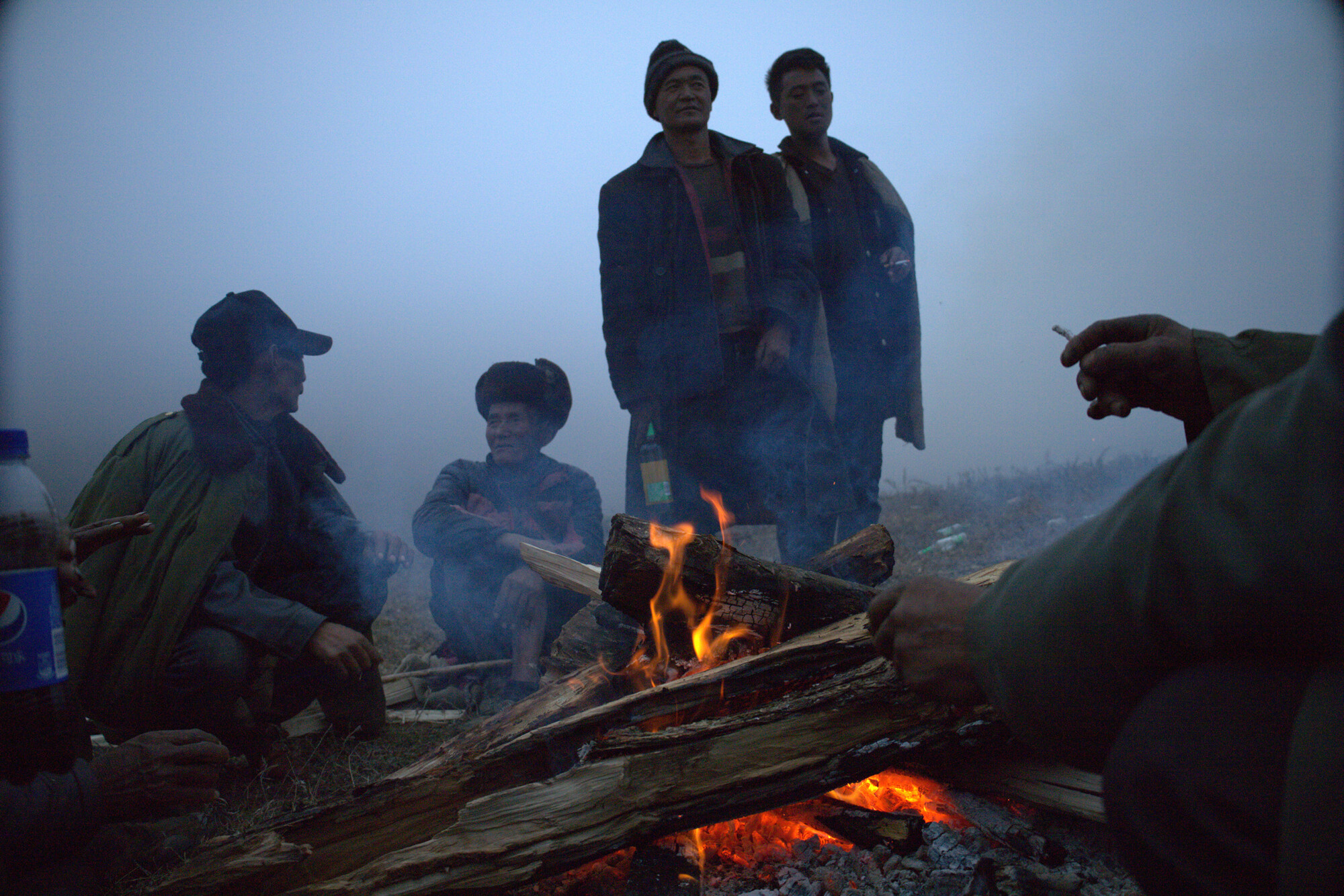Nuosu Music from Liangshan Vol. 1: Mouth Harp | Compilation Dedicated to the Traditional Mouth Harp Music of the Native Nuosu (Yi) People
Exclusive premiere of incredible compilation dedicated to the traditional mouth harp music of the native Nuosu (Yi) people, who live in the mountain cliff villages in southwest China. ‘Nuosu Music from Liangshan Vol. 1: Mouth Harp’ will be released July 7th, 2023 via WV Sorcerer Productions.
On the southeastern edge of the Chuanxi Plateau, along the northern bank of the Jinsha River, stand the majestic Liangshan Mountains. Here, the children of the Apu Dumu took root and sprouted. They became known as the Yi people and have continued to thrive in this region for thousands of years. The Yi have created a dazzling culture and artistic tradition, in which the Yi mouth harp is the brightest star.
The mouth harp, also known as a “Jew’s harp,” is called “ꉸꉷ” or “ꇇ” in the Yi language. It is recognized as an instrument of the Neolithic Age. According to legend, a long time ago, there was an old grandmother who gave birth to two smart, hard-working and capable girls. Unfortunately, both girls died of illness one after another. The grandmother missed her daughters day and night, so she cut two pieces of bamboo, one thick and one thin, and carved the shapes of a tongue and a head on them. When she missed her daughters, she would take the two pieces of bamboo in her mouth with her fingers gently moving her “daughter’s head”, and in this way, the two sisters would sing and talk, comforting her not to be sad. This is one of the legends about how the Yi mouth harp came to be. In addition, the ancient book of the Yi people, “ꈬꉻ” (also known as “Gong Shi Zhuan”), tells of the migration by ancient Yi ancestors from northeastern Yunnan to the Liangshan Mountains. A passage explains that, “ꐰꇑꐧꑭꆹꄡꑐ, ꉼꉹꇇꁉꆹꄡꋌ”, which translates as, “Don’t put a flute in your waistband and don’t take a mouth harp in your hand.” According to some genealogies and documents, it has been at least 2000 years since the ancestors of the Dishishiwolihaguhou tribe and the Heicecewoagaqiunie tribe migrated to Liangshan from northeastern Yunnan.
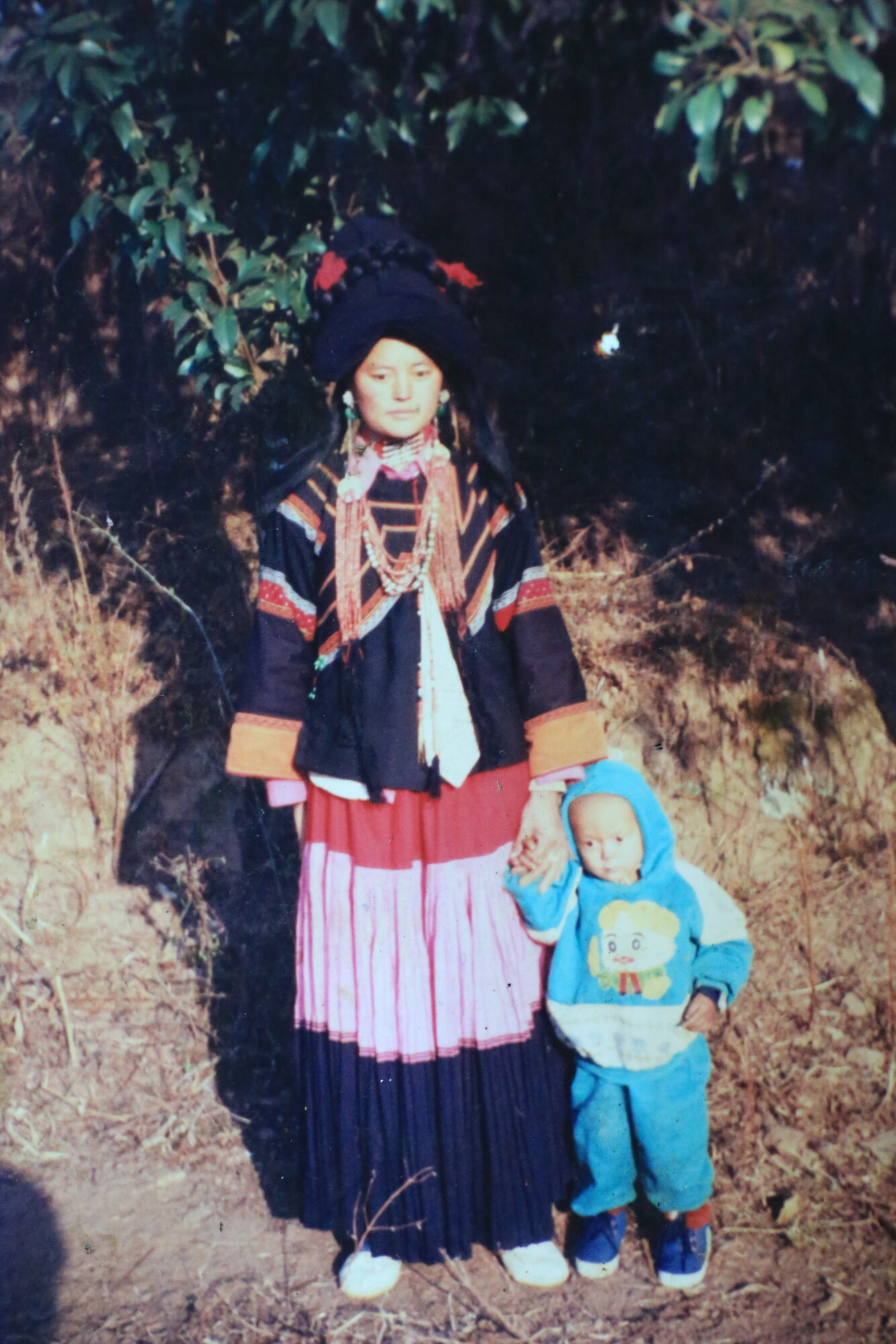
The main materials for making Liangshan Yi mouth harps are bamboo and brass. Bamboo harps are usually about 15 cm long and 1 cm wide and contoured like the double-ear, leaf-shaped waist knives of the Yi people, while brass ones are about 10 cm long and 1 cm wide in a leaf-shape. The traditional mouth harps are mainly made with one to five pieces, among which the one-piece and two-piece variants sound relatively low and thick. These are suitable for the expressions of the majestic mountains and rivers. One-piece mouth harps have one fundamental tone and other resulting tones are overtones. There are two kinds of the two-piece mouth harps. The first, called “ꈬꉻ”, has the fundamental tones of do and re, and the second kind has a bright and clear sound. The three-piece mouth harps are the most popular. The first kind, popular in all Liangshan areas, is called “ꑟꏃ” and has the fundamental tones of re, la and do. The second kind, popular in Adu areas such as Butuo, is called “ꌙꑠ” and has the fundamental tones of la, mi and sol. The third kind is popular in areas like Meigu, and its fundamental sounds are sol, la and do. The four-piece mouth harp, popular in all areas of Liangshan, is called “ꁯꎑ” and the fundamental sounds are sol, re, la, and do. The five-piece mouth harp is popular in areas like Butuo and Jinyang and has fundamental sounds sol, re, fa, la, and do.
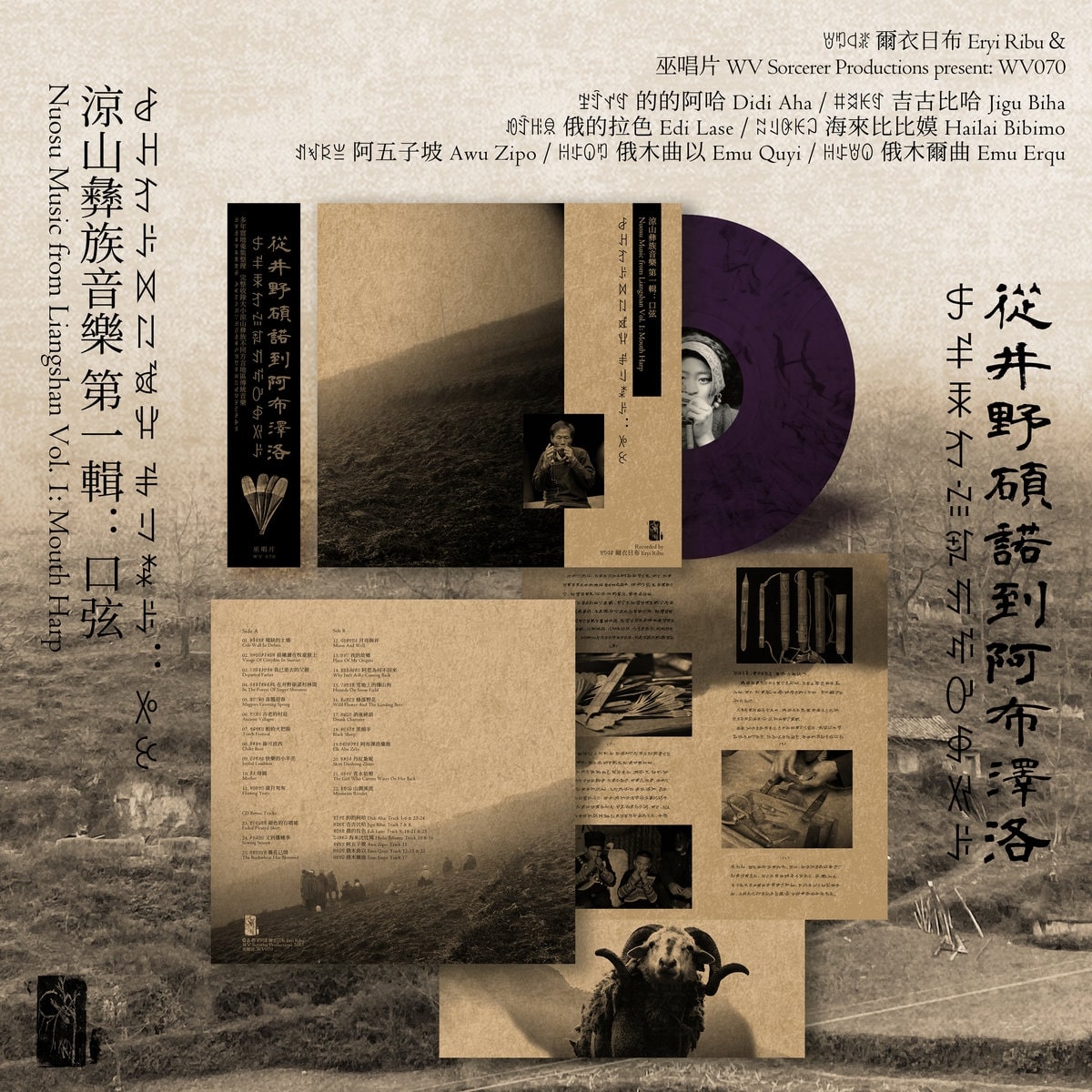
When playing the mouth harp, the performer will hold the tails of the bamboo or brass pieces with their left hand, put the fan-shaped pieces between their slightly open mouths, and pluck the pieces with the fingers of their right hand. With the resonance of the mouth and the movements of the lips, tongue and mouth shape, it can produce a series of overtones in addition to the fundamental sound of each piece. Skillful players can produce sounds of storms or rough waves.
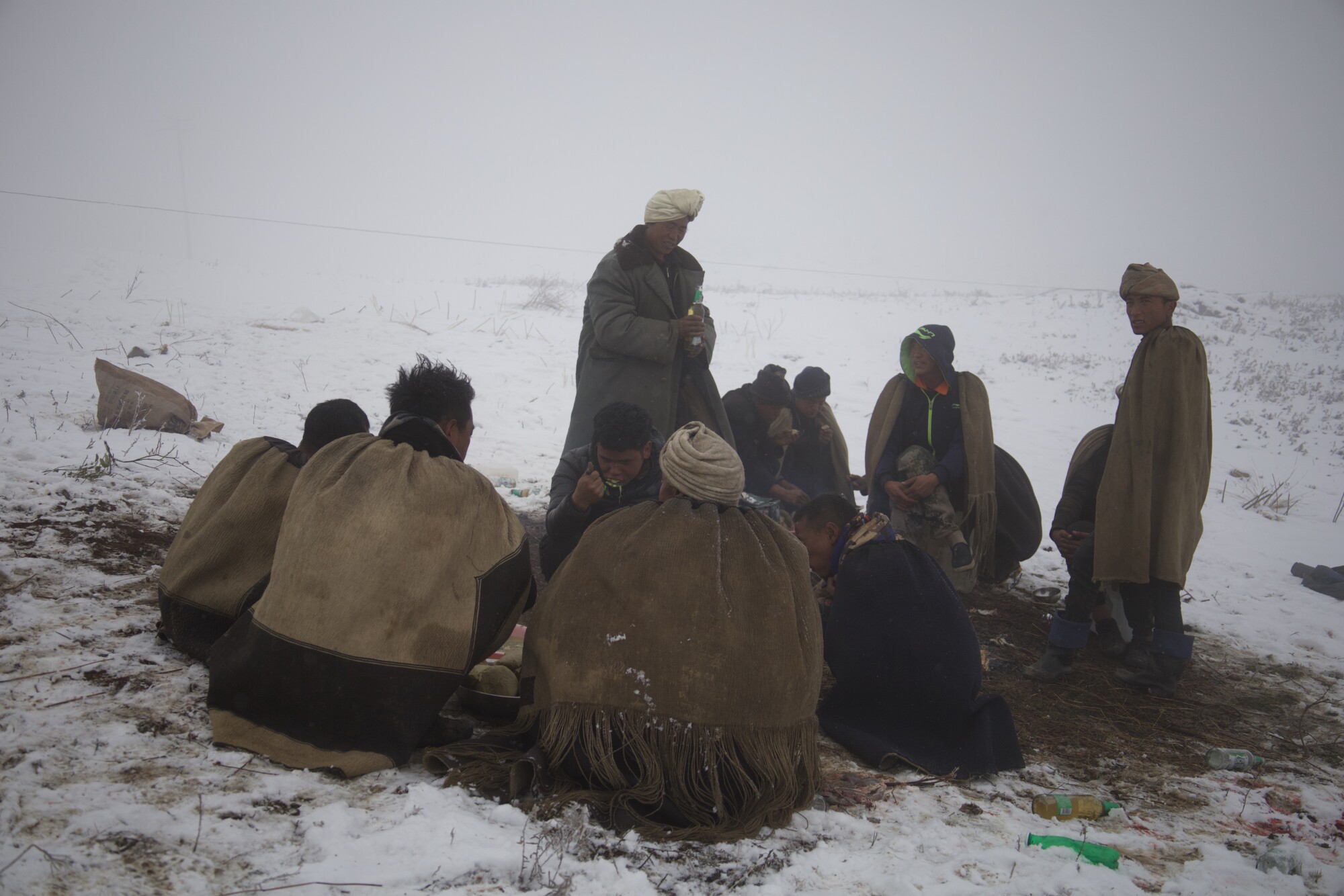
In the Yi region of Liangshan, the mouth harp is called a “talking instrument,” so the music of the Yi mouth harp is closely related to the dialects of Liangshan Yi regions. In some Adu dialect regions like Butuo, the mouth harp has its deepest roots and mouth harp music is found in abundance. The tuning of the mouth harp music there is similar to the folk songs of Adu, while the tuning of the mouth harp music in Yinuo dialect regions such as Meigu is also similar to the dialect and folk songs of Yinuo. The main focus of Yi mouth harp music is the declarative phrases or paragraphs, sometimes very long, sometimes very short. It is usually finished in a single breath with almost no interval in between. The parts connecting these main phrases are mainly composed of a fixed pattern of the fundamental tones and connect successive declarative passages (although these may instead be in the introduction or the closing part). This pattern is nearly a fixed compositional structure of mouth harp music, but there is some mouth harp music that simulates folk songs.
The Yi mouth harp has a strong social function. In the proverb of Yi, it is often said “ꐪꇑꀿꇴꋌ, ꉼꉹꃀꈬꋌ, ꁁꁻꃺꉂꋌ,” which means, “The flute is thinking of the father, the mouth harp is thinking of the mother, and the yueqin is thinking of the brother.” The Yi mouth harp is also semantic, and so Yi mouth harp players say, “ꉈꃀꑟꉪꆏꑟꂢ,” which means they will play whatever they have in mind. The Liangshan Yi language has the feature of being flat and stable in tone, so it is very easy to get an accurate tune position when transposing it into mouth harp music. In addition, there is mouth harp music with transitions from semantic to non-semantic and also music with non-semantic forms. Yi people love music because it is not only beautiful and touching, but it can also tell stories and express feelings.
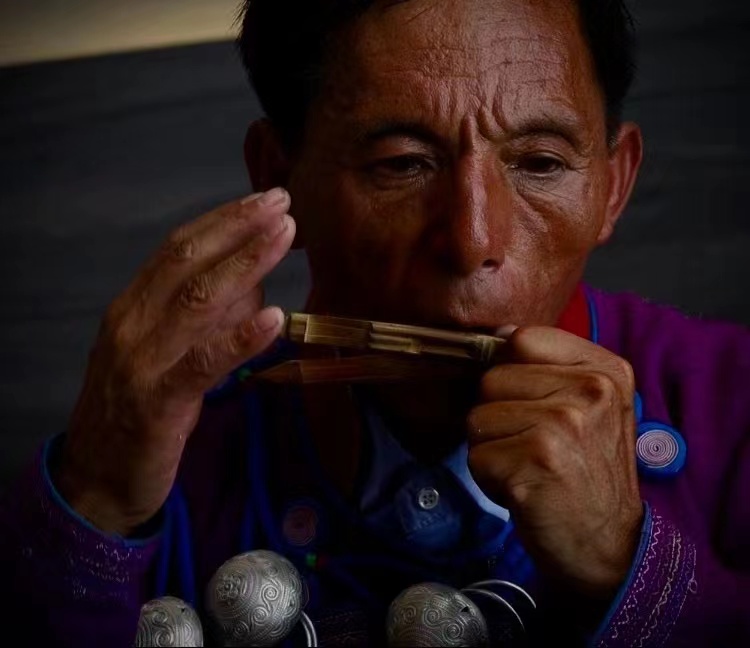
The production of the mouth harp not only requires special materials but also high techniques of craftsmanship. The sleeve of the mouth harp is usually made of bamboo, which is engraved with exquisite patterns and designs, and some of them are also painted with colors. Yi girls hang this mouth harp sleeve on their chests with colored threads. It is also considered an ornament of exquisite beauty with characteristics of the Yi people.
Nowadays, there are fewer and fewer people in the Yi countryside who can play and even fewer who can make the instrument that can produce such beautiful and primordial human sounds. I collected quite a lot of traditional music when I traveled around Liangshan in search of folk artists. I have carefully selected some mouth harp music from several dialect regions of Liangshan and present this album to you. Please join me in listening to the language buried deep in the heart of Yi people, the voices of the communities that have enjoyed a special solitude, and the melodies that are familiar but increasingly distant. Let’s find these stories that are often gradually lost under the wheels of modern civilization. – ꇐꑳꒉꁬ Eryi Ribu & ꎰꌺꇜꉐ Suori Geha
I can’t even remember how I met Ribu for the first time, but I do know that for nearly six or seven years he returned to the Liangshan region, his homeland in Southwest China, travelling to every different dialect area, recording and filming again and again. He walked through the villages on the cliffs, stayed in the homes of local musicians, talked by the fire at night, attended the sacred Nimucuobi ceremony for the dead on the snowy mountain, drank alcohol and slaughtered sheep at weddings and funerals. As a native Nuosu people, Ribu is passionate about his own culture and strives to protect it by documenting and recording as much as possible. These recordings are not taken from the tourist attractions, but with the utmost love for his homeland.
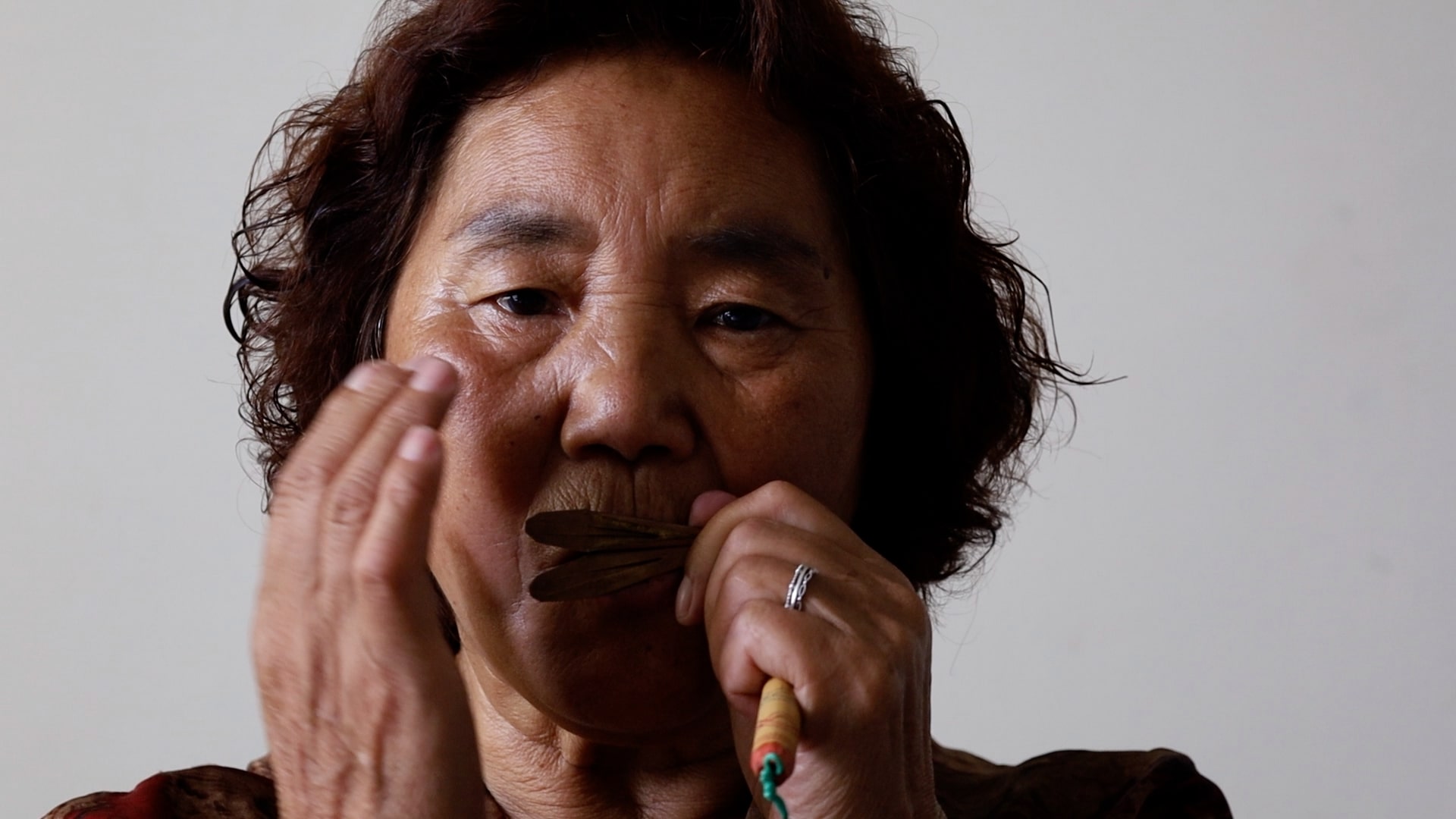
WV Sorcerer Productions feel privileged to have the opportunity to work with Eryi Ribu on the release of a series of traditional Nuosu music from Liangshan, and the first chapter will be dedicated to the mouth harp, an ancient instrument that has been telling their stories for thousands of years.
This album is the result of years of work by Eryi Ribu, a selection of recordings from various mouth harp musicians of different ages and from different areas of Liangshan. Some of the musicians live in villages that are inaccessible to outsiders. This is an invaluable collection both as an art form and as a social archive – the pearl of Nuosu culture.
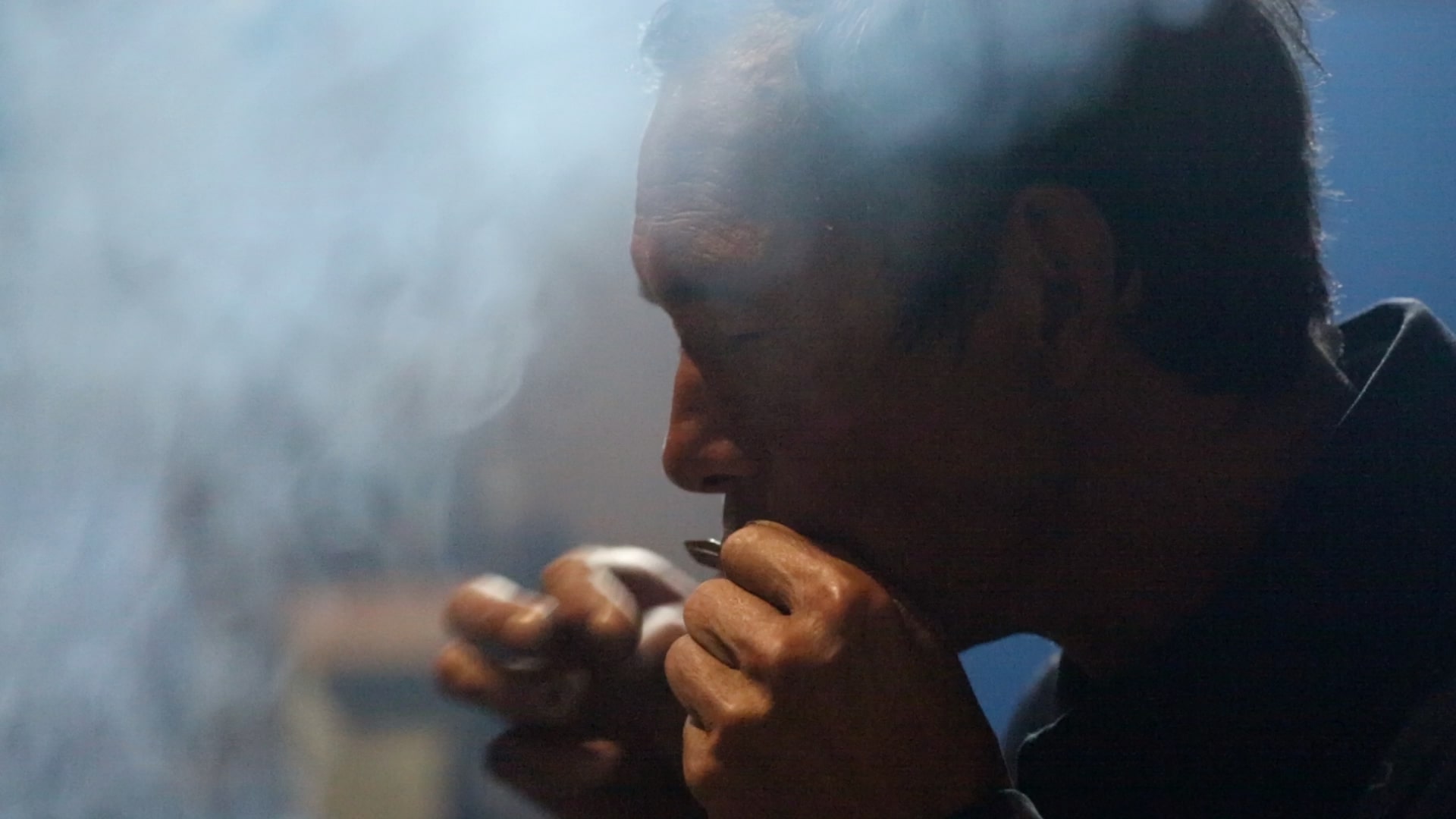
Putting aside the cultural contexts for a moment and just listening to the music, you’ll find that this album is full of emotion and musicality, with complex layers of sound. The brass and bamboo mouth harps can have from one to five pieces in a single instrument, and the musician can produce multiple tones simultaneously with a very distinctive melody. It’s no exaggeration to describe some parts as psychedelic music, while this music is certainly culturally significant as a heritage of the Nuosu people, it also takes you on a journey to a wider world. – Ruò Tán
WV Sorcerer Productions Facebook / Instagram / Twitter / Bandcamp

